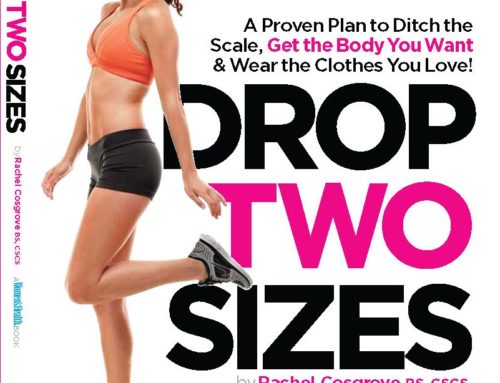I am training for my first fitness competition and my coach asks for clients to wear a Heart Rate Monitor during our cardio sessions to make sure that we are working hard enough. Prior to this, I had never used a heart rate monitor and relied more on the Rate of Perceived Exertion (RPE) for training. The Rate of Perceived Exertion is using something like the talk test to gauge your intensity.
After using the heart rate monitor for my Cardio Sessions, I have become a fan. Here are my reasons for why I believe a Heart Rate Monitor is useful for training
Reasons for Using a Heart Rate Monitor During Training
It is always helpful to have data points and metrics to gauge progress in your training program
I am a big believer in celebrating progress, but how will you gauge progress if you can’t compare data points? How will you be able to measure improvements?
This is especially important if part of your fitness goals are to improve conditioning and endurance. With a Heart Rate monitor, you can track how long it takes you to recover during intense training intervals. The faster you recover the better your conditioning. Endurance athletes can make sure that they are not going out too fast on longer workouts. Those training for endurance can also measure how long they are able to sustain training in specified training zones
 Are you working hard or hardly working?
Are you working hard or hardly working?
As a fitness professional this is one of my personal pet peeves. I will see people stay on the eliptical machine for 50-11 hours and when they get off they are barely out of breath. True enough they may have a medical condition that prevents them from getting their heart rate up too high, BUT oftentimes this is not the case.
As human beings we like to pick the path of least resistance, therefore many people get on the elliptical machine because it’s easy. Of course the elliptical is better than sitting on your couch, but I know most gym members are after composition change. The composition change they are looking for is Fat Loss.
Can i be real with you here? Fat loss isn’t going to happen by going for a leisurely stroll on the elliptical.
Side note: Cardio isn’t your main weapon in fat loss either, but that’s another blog topic for another day.
When I use my Heart Rate Monitor, I am able to see how hard I am actually working during my cardio sessions with no subjective guessing. I can’t take the easy way out. It’s telling me that I’m not in my specified training zone. I actually had to disqualify the elliptical as one of my cardio choices because it just didn’t challenge me in the way my goals needed it to.
On the other hand, when I taught cycle class my heart rate was in the target zone for most of the class. It was great validation that as an instructor I was designing a class that was catering to my participants goals which for most is: endurance for road racing, endurance for running, improved overall cardiovascular fitness, or fat loss.
3. It’s a great tool to use to determine which training modalities work the best for your goals and also tracks how many calories you are burning during cardiovascular exercise.
Right now I need to increase the intensity of my workouts and so I use the monitor to see which training modalities work best for me. I also find it interesting that my Heart Rate gets up as high during my strength training as it does during cardiovascular training (that’s another topic).
Plus I like to see how many calories i have burned during my sessions. Of course there is room for error, but from what I have read the readings for calorie burn are accurate.
NOTE: This will be a HUGE eye opener when you see that the hour you put in at the gym did not burn 900 calories and that is why going to the gym does NOT give you the license to eat whatever you want. Matter of fact, you will most likely be shocked at how little calorie expenditure most get at the gym (particularly those of the phoning in/don’t like to work hard ilk)
Using a Heart Rate Monitor
Finding your Resting Heart Rate
Your resting heart rate is how fast your heart beats at rest. The normal Resting Heart Rate for adults can be anywhere from 60 to 100 beats per minute. The lower your resting heart rate, the more efficient your cardiac function.
Measuring Resting Heart Rate
It is best to measure the resting heart rate before you get out of bed in the morning. I prefer to measure for an entire 60 seconds. I would also recommend doing it for at least 3 days and taking the average.
Finding your Training Zones
After you have found your Resting Heart Rate, now it is time to establish your training zones so that you will work and not be one of the people hardly working.
The Fat Burning Zone?
I’m sure some still remember the fat burning zone where people did long amounts of steady state cardio because that was thought to dip into fat stores.
Well that has not been proven to be true. What has been proven to true is that the harder you work, the more calories you burn during the session and after. (It doesn’t have to be a cardio machine either)
This is another blog post, but the fat burning zone needs to go the way of the fat free garbage of the 1990’s.
What is a good training zone?
Of course it depends on your goals. Someone who is looking to improve endurance and conditioning will have a different zone from those who are interested in fat loss.
For Fat loss clients, I would recommend working between: 75% – 90% of your Maximum Heart Rate. (If you use the resource above they will have that information for you)
This is moderate/high intensity workout. You will find that trying to do this for an hour is TOUGH which is the point. We want more efficient workouts so forget that hour long cardio session and get it in for 30-45 mins.
BUT
There’s always a but.
I really like the Heart Rate Monitor, but it is important not to begin to use the data as GOSPEL and never listen to your body.
1. Margin of Error
The forumla that is most popular to calculate Target Heart Rate has had its share of controversy. We find Maximum Heart rate by subtracting age from 220. The number 220 has come under fire for not having enough of a scientific basis and some have claimed it wasn’t even supposed to be the universal number for determining heart rate.
2. EveryBODY is different
These formulas do not take into account training background, health history, body composition, and genetics. With that being said, if we have two 25 year old men and one happens to be a well conditioned athlete and the other is a couch potato it’s safe to say that their Maximum Heart Rate will be different.
3. It is yet another gadget to add to your collection
You don’t NEED a Heart Rate monitor, but I think it can be a helpful tool in your training. If you don’t want a heart rate monitor, then you can use the sensors on the cardio machines. I compared my Heart Rate monitor to the monitors on the machine and only found the machine to be only one or two beats behind my monitor.
Whatever it takes
I’m all for whatever it takes to get people closer to reach their fitness goals. I find that most of us just aren’t objective enough to gauge whether or not we are working hard enough. We will let ourselves take the easy way out. Having data points and knowing exactly how hard you are supposed to work will eliminate this temptation. It will also give you metrics to help you set more fitness goals other than just cosmetic changes.
Happy Training!
 Are you working hard or hardly working?
Are you working hard or hardly working?





Leave A Comment